Sutton Coldfield GC is laid out on the extreme western edge of the immense Sutton Park, a mere seven miles from Birmingham city centre and quite near Icknield St (an old Roman road) down the 13th fairway. Prior to the 16th century this park was part of Cannock Chase where Beau Desert is located. More than 2000 acres in size, Sutton is one of the largest urban parks in Europe. A significant section of the park is natural heathland and this is where the club chose to build its course just before the turn of the century.
Dr Alistair MacKenzie submitted a proposal to redesign the course in 1919 which with amendments was eventually opened in 1934. The basics of this plan remain today with some major alterations including all the fairway bunkering being removed. Interestingly, about half the course is not to Dr Mac's plan below; including what I think is the best hole, #7, though it is likely the teeing area and greensite (I think the 9th in the map below) were cannibalised from his design. Two other very good holes which aren't to the plan are #s 14 (a long testing par 4 on the winter course) & 15 (a tough Redanish par 3).
In the last few years the club has embarked on tree removal and bunker renovation projects. Much of the work has enhanced the design, but there is a long way to go with trees!

This is the fourth time I had the opportunity to play the Blue Course, often referred to as the Winter Course. The total length is about 600 yards shorter than the medal tees, however, par is reduced by two to 70. This is due to the fabulous 7th being reduced to a par 4 length, same for the 14th. Also of note is the addition of the par 3 fifth to replace the short 2nd. These changes serve the dual purpose in breaking up the unusual stretch of three par 5s in a row and creating one of the best two-shotters in The Midlands.

The opening hole is one of the least prepossessing one is likely to come across in golf, however, the green is deceptively slippery as it runs away from the fairway. After a pleasant walk through a wood, the second (the normal third) introduces the golfer to a vast heathland which stretches to the other side of the park. This is a brute of a hole into the wind.
The summer second hole, one of two par 3s replaced in the winter. It is very obvious the green is overcrowded with trees.

Winter 2nd before & after.



The third turns right at an awkward angle against the terrain (a feature of Sutton Coldfield).
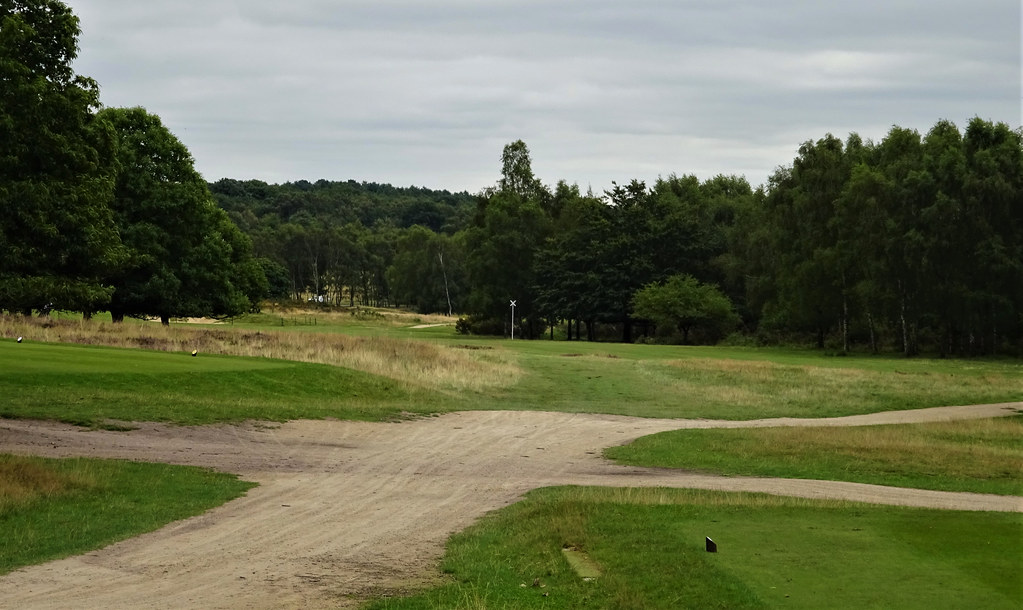

A rugged par 5, the 4th heads uphill and into the prevailing southwesterly breeze. On this hole, the 6th and 7th, one can see the numerous bunkers which have been filled in with trees now narrowing the corridors.


I rather like the par 3 relief hole (#5) and think it better than either the normal second or 9th for as both of these par 3s are choked by trees. The reverse cambered 6th is an interesting hole because of the drive working away from the green and for the diagonal cross bunker some 50 yards short of the green. That said, I count five holes at which the dogleg turns significantly in the driving zone, four of these examples do so against the lay of the land. This is an interesting feature to use once or twice in a round, but certainly not four times.
Its a grand treat when one re-discovers something and a light switches on. The seventh is one such re-discovery. I can't understand why the club would ever dream of playing this hole as anything but the long, tough, demanding par 4 that it is in the winter. Like, the 6th, this hole turns against the grain of the terrain. It is essential to keep as far right as possible even if it requires a lay-up.

The green is set at a perfect diagonal benched into a hill. The entire package makes this hole nothing short of one of the finest in The Midlands. The before and after reveals a stark improvement!
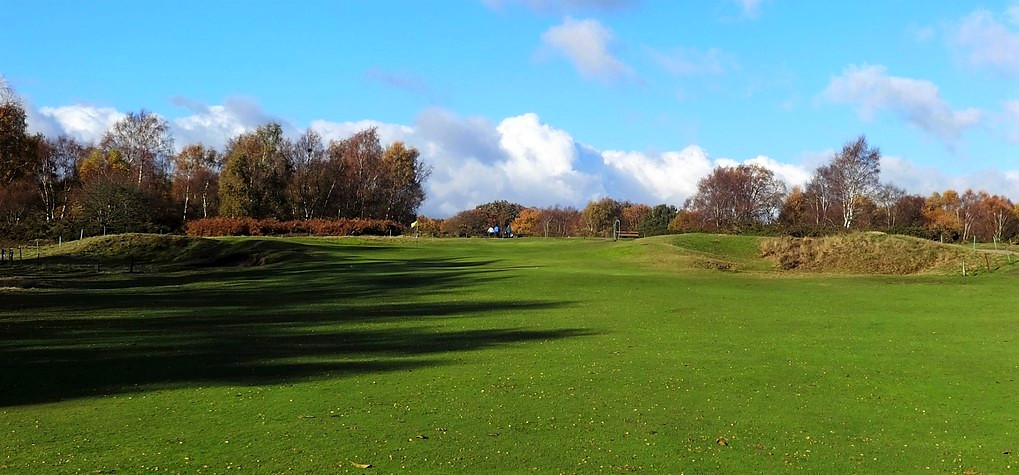


The funneling 8th features excellent use of sentinel trees guarding both the drive and the approach.

A closer look at the green. If there is a criticism to be levelled at Sutton Coldfield, it is the similar look and feel of several green sites. All the greens are interesting in and of themselves, but as a set they are slightly repetitive.

The escape routes from the greens are not exactly man-size.

The final hole of the front side is a diminutive par 3 which plays parallel to the summer 9th - also a par 3. I prefer the winter hole because the green is diabolically small and sloped back to front. The summer 9th is a problematic situation. The trees crowding the green are very fine specimens, but there is no question they compromise the playing characteristics.
Summer hole.

Winter hole.

Retracing our steps through the wood from the first to the second, the opening hole on the back nine is a short two-shotter generally sloping right to left. The left edge of the right bunker is a good line. Before and after.

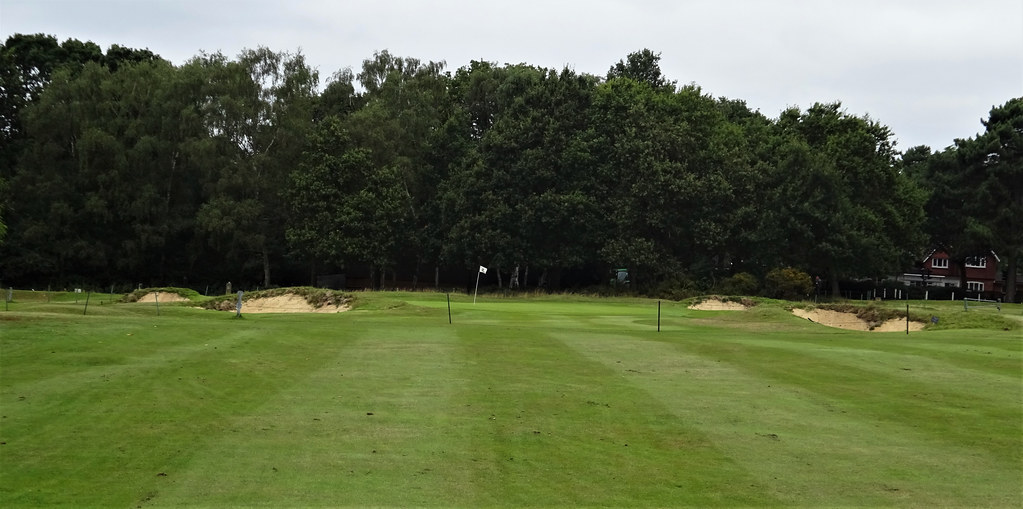

#11 is a very curious hole. Its another with the terrain working opposite the dogleg, but there is precious little room through the trees. I reckon one just has to lay-up and hope for a good long second. What should be glaringly obvious by now are several holes which turn at the driver zone - effectively leaving a much smaller landing area off the tee than it appears unless one shapes the ball precisely. I spose for a course which doesn't have fairway bunkers this is an effective technique. As stated earlier, in an effort to create a bit more variety in the design, I would prefer if some of the fairway bunkers were restored and perhaps the landing areas widened here and there. Anyway, the lack of space is a great shame on this hole because the green is one of the more interesting on the course. Before and after.


The green.
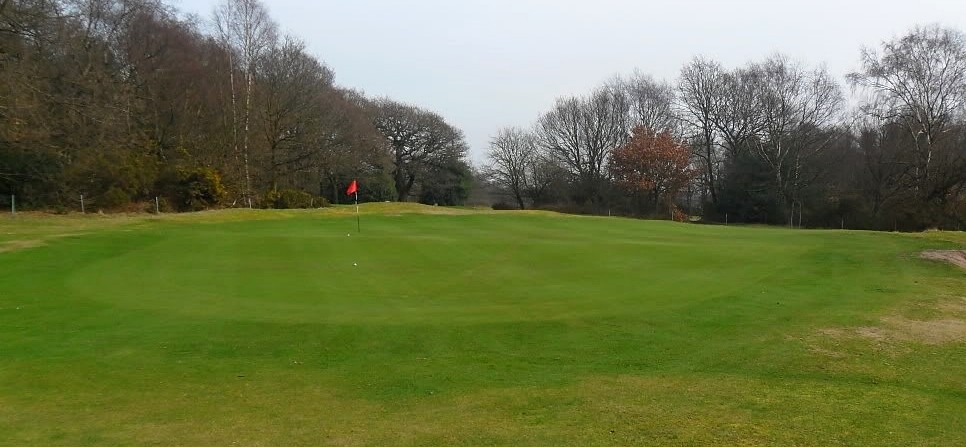
Turning right, the 12th features a creek crossing the fairway. The normal tee isn't at nearly such a sharp angle as it is located well left, but it plays far longer. Below is a view from the normal tee.
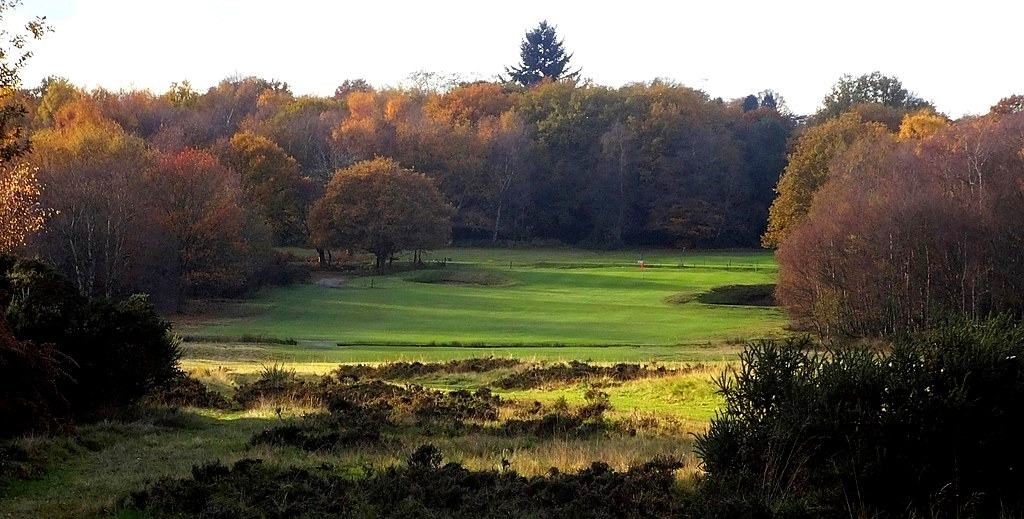
A short two-shotter, #13 heads into more open heathland. The green is angled and shallow making drive placement paramount. Before and after.


The following hole is another long par 4 converted from a short par 5 in the winter. The drive is far more daunting from the normal tee, but for that the hole is really better as a par 4 because of the severity of the green angle.
Before and after.


The first par 3 on the back nine is a cracker and reminds me a ton of Formby's 5th. They are both takes on the Redan, but can't really be labelled as such. I don't believe this hole has had bunker work, but I rather like the look of the large left bunker.


It had to happen eventually - a hole I really dislike - both versions of 16. Although, I like the name of the hole.

Unfortunately, the 16th triggers a rather disappointing finishing three holes. #17 is a solid par 3, but still feels as if jammed into a corner due to trees.

The home hole too is adequate, but after so many very fine holes one hopes for more. I would, however, like to point out the fairway has now been extended. Previously, the short grass ended rather awkwardly.
I much prefer Sutton Coldfield's winter card with less foliage on the trees and the rough down. The experience of playing in the park is sublime and very different from other Birmingham courses as a rooftop isn't seen the entire game. Rare for me, I really enjoyed the set of long par 4s and think this is the core of the winter course. I honestly can't see how anybody could be disappointed with the course in winter. I reckon my attitude shouldn't come as much of a surprise; together with Little Aston, Sutton Coldfield co-hosted the 2010 English Amateur - surely a sign of quality when one reviews the list of hosts for this championship. 2021
Previous stops on the 2013/14 Winter Tour
Tadmarton Heath
http://www.golfclubatlas.com/forum/index.php/topic,26579.0.htmlNex scheduled stop; Worplesdon
Ciao